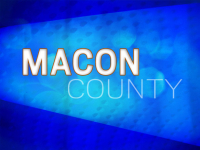Slip-sliding away
Dateline 1999: David Kullivan a forestry/wildlife student at Louisiana State University, tells faculty that while turkey hunting in the Pearl River Wildlife Management Area, a pair of ivory-billed woodpeckers foraged in trees as close as 10 yards from him. Soon after, an expert-avian search team fielded in part by the Cornell Lab of Ornithology and funded largely by Zeiss Optics hit the woods to track down this fabled icon of southern bottomland hardwood forests. After weeks of searching, the search team was left scratching their heads as the ethereal Lord God Bird once again vanished into the impenetrable swamp.
Dateline 2000-2004: zzzzzzzzzzzzzzzzzzzzzzzzzzzz … For most, thoughts of ivorybills had faded back into the foggy swamps.
Dateline April 28, 2005: Announcement of the rediscovery of the ivory-billed woodpecker made by John Fitzpatrick, director of the Cornell Lab of Ornithology, at the U.S. Department of the Interior in Washington, D.C. Those present included Gale Norton (then Secretary of the Interior), Michael Johanns (then Secretary of Agriculture) and the Congressional delegation from Arkansas where the bird had been “rediscovered” on Bayou de View. And there were no cautions or qualifications as Fitzpatrick announced: “For a bird guy, I can’t begin to tell you how thrilling it is — it’s thrilling beyond words to stand here with two cabinet members at my side … After 60 years of fading hopes that we would ever see this spectacular bird again, the ivory-billed woodpecker has been rediscovered.”
Now we have to backtrack just a bit because Cornell was actually doubling-down on “evidence” they acquired in spring 2004, but they were buying time to, according to the Cornell University News Service, “… allow the search team to gather convincing evidence of the bird’s existence.”
May 2005: Not to be outdone, Auburn ornithologist Geoff Hill and students “find” ivory-billed woodpeckers on the Choctawhatchee River in the Florida Panhandle. In fact, Hill estimated that there were likely at least nine pairs of ivorybills in the Choctawhatchee.
And about that evidence:
Related Items
Cornell’s 2006 search results: The single best piece of evidence obtained was the four-second video footage taken by David Luneau on 25 April 2004. In total, the Cornell search team spent 35,440 hours engaged in various forms of search activity including man-hours plus automatic cameras and automatic sound-recording devices.
Cornell went on to expand their search (increasing man and remote sensing hours), sending teams to Florida and Louisiana through 2009.
So where does that bring us to today? Private, individual searchers continue to find ivory-billed woodpeckers. Some have even produced their own blurry videos. Yet none have produced any kind of clear images and none have been able to take researchers back and document sightings.
When this saga began a lot was made about not being able to prove a negative – in other words there is no way to prove that ivorybills are extinct, I mean we can’t have someone under every tree at the same time, right? But it looks like the scientific community has decided to take on the challenge.
July 2011: Dr. Nicholas J. Gotelli, University of Vermont, et al, publishes “Specimen-based modeling, Stopping Rules, and the Extinction of the Ivory-billed Woodpecker.” Gotelli put the odds at finding a live ivory-billed at less than 1 in 15,625.
October 2011: Andrew Solow of Woods Hole Oceanographic Institution, et al, publishes “Uncertain Sightings and the Extinction of the Ivory-Billed Woodpecker,” which concludes there is, “…substantial support for extinction.”
I hear the ringing call of another iconic woodpecker in my ears – ha-ha-ha-HA-ha! ha-ha-ha-HA-ha! ha-ha-ha-ha-ha.
(Don Hendershot is a writer and a naturalist. He can be contacted at This email address is being protected from spambots. You need JavaScript enabled to view it..)









